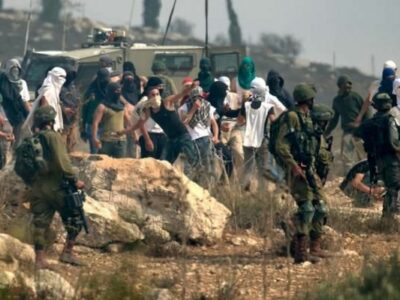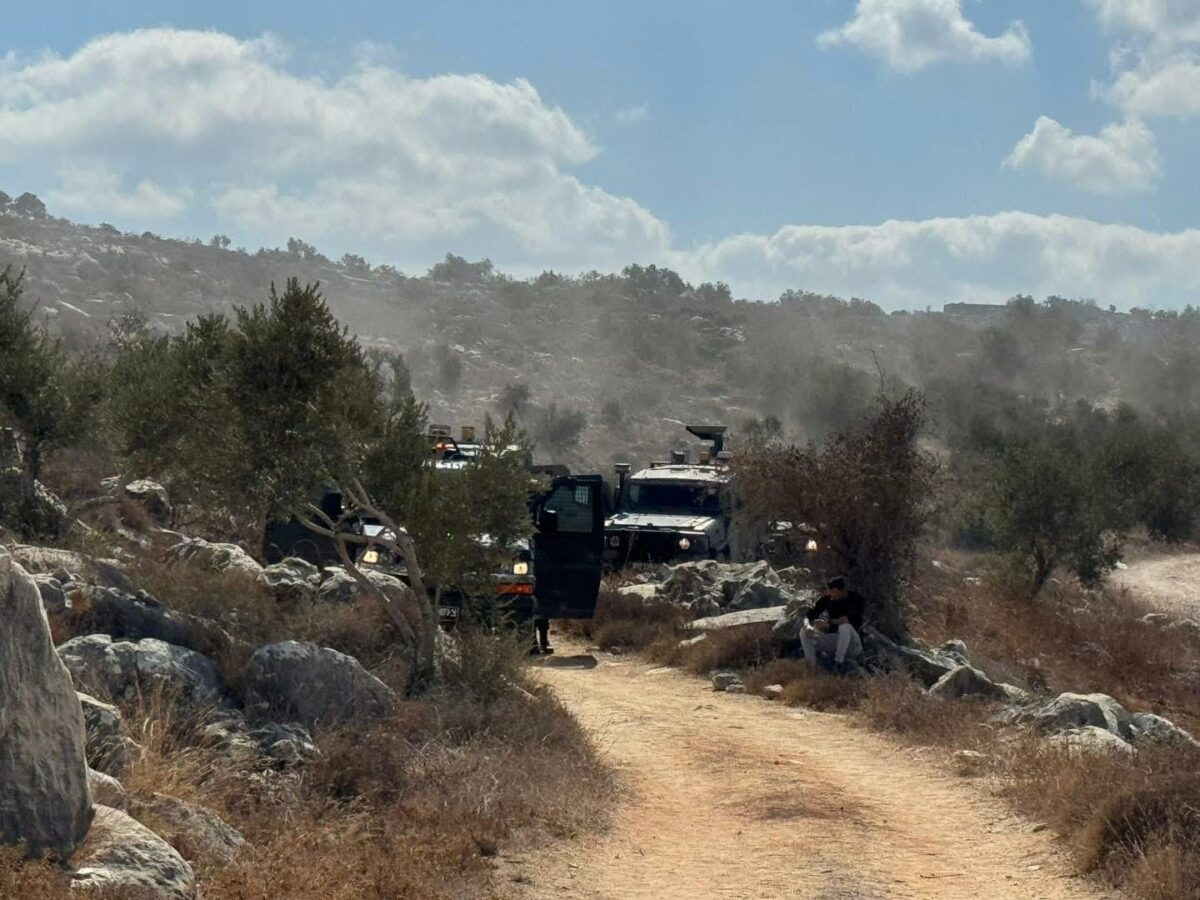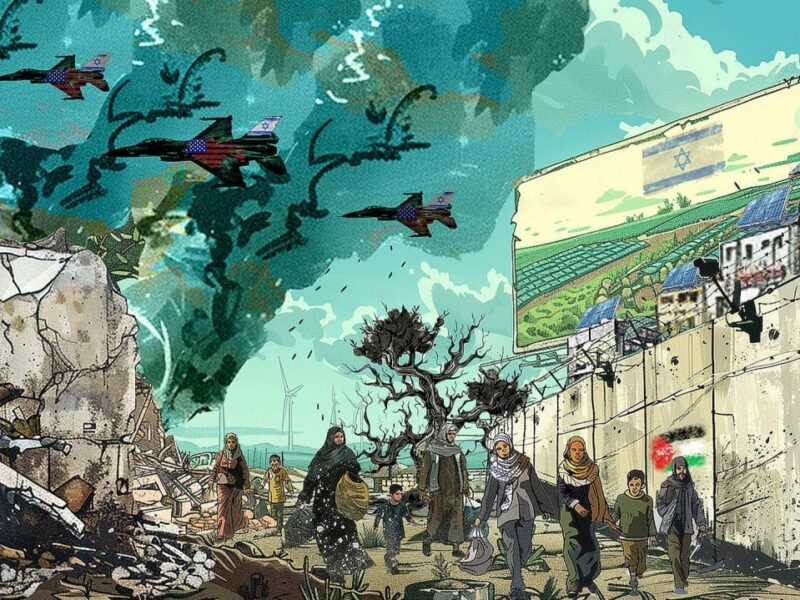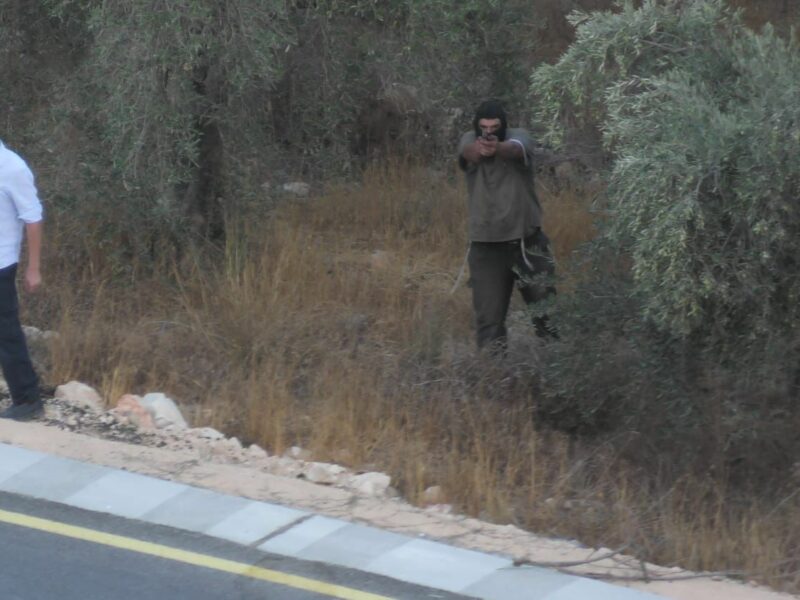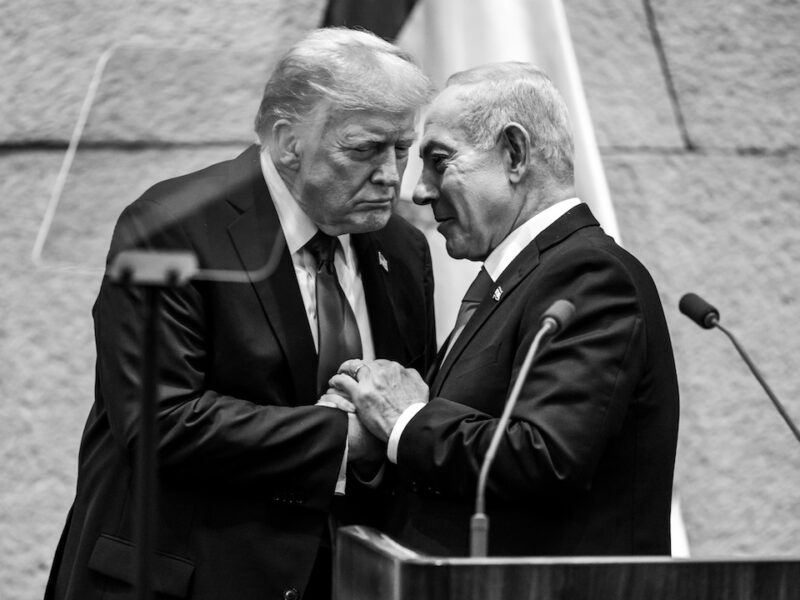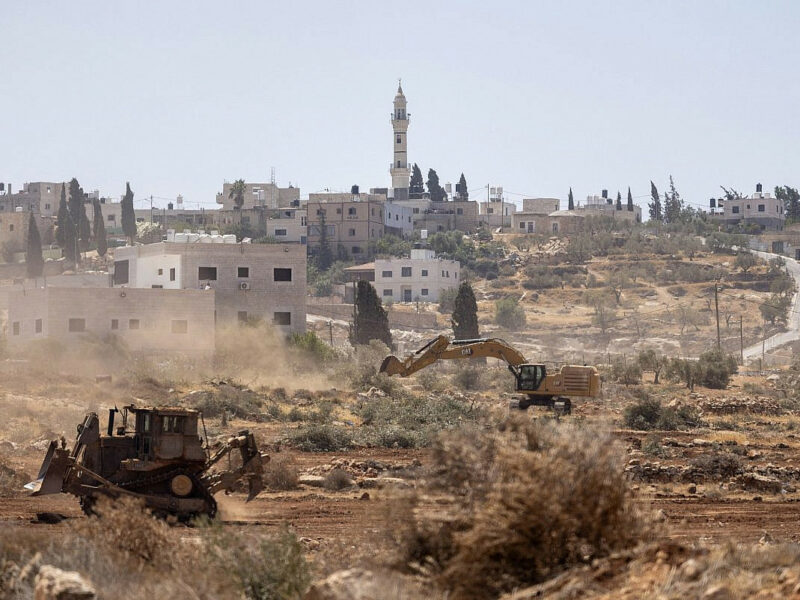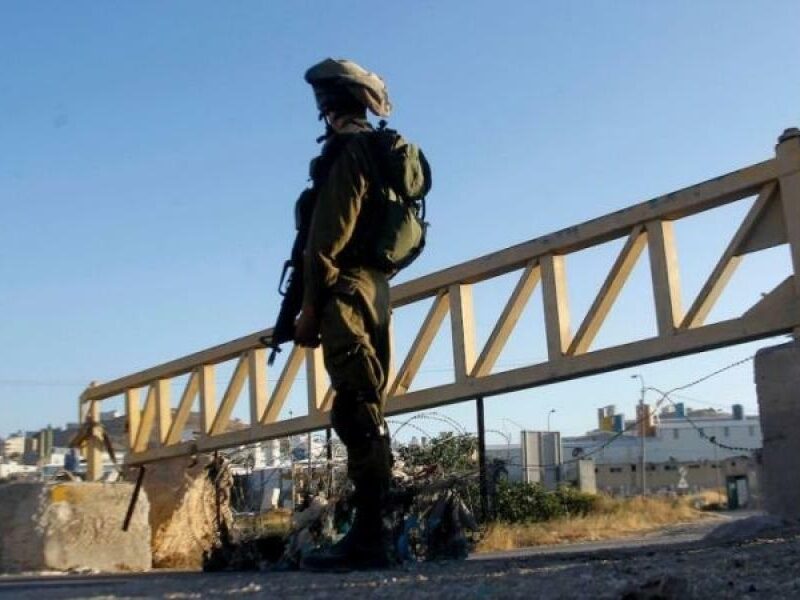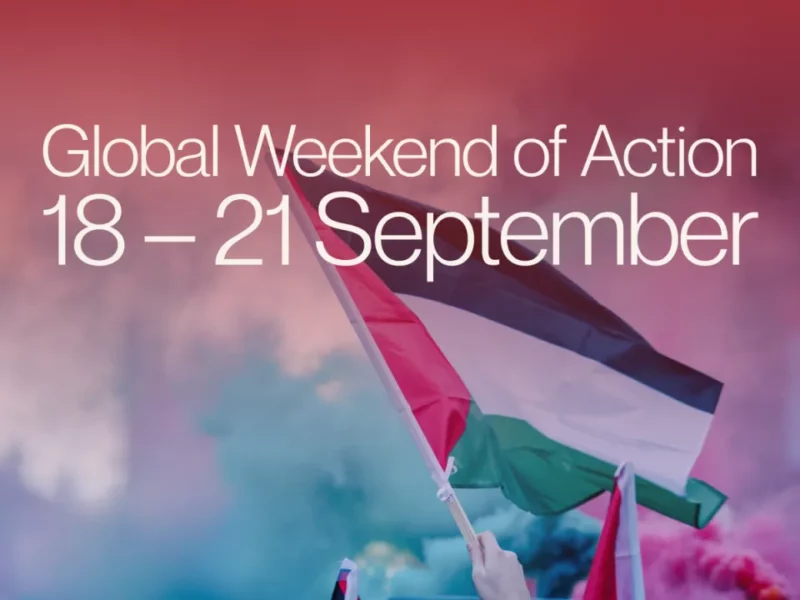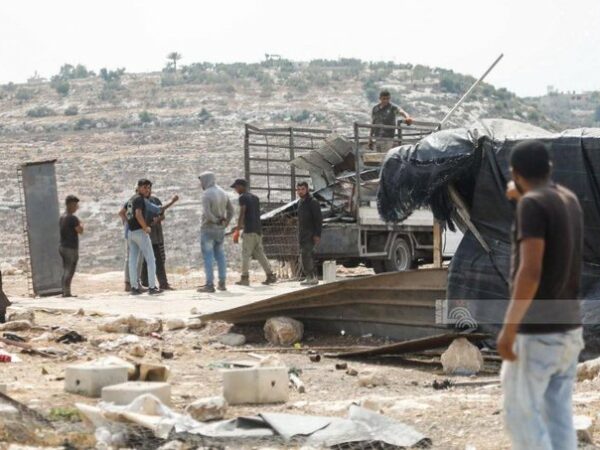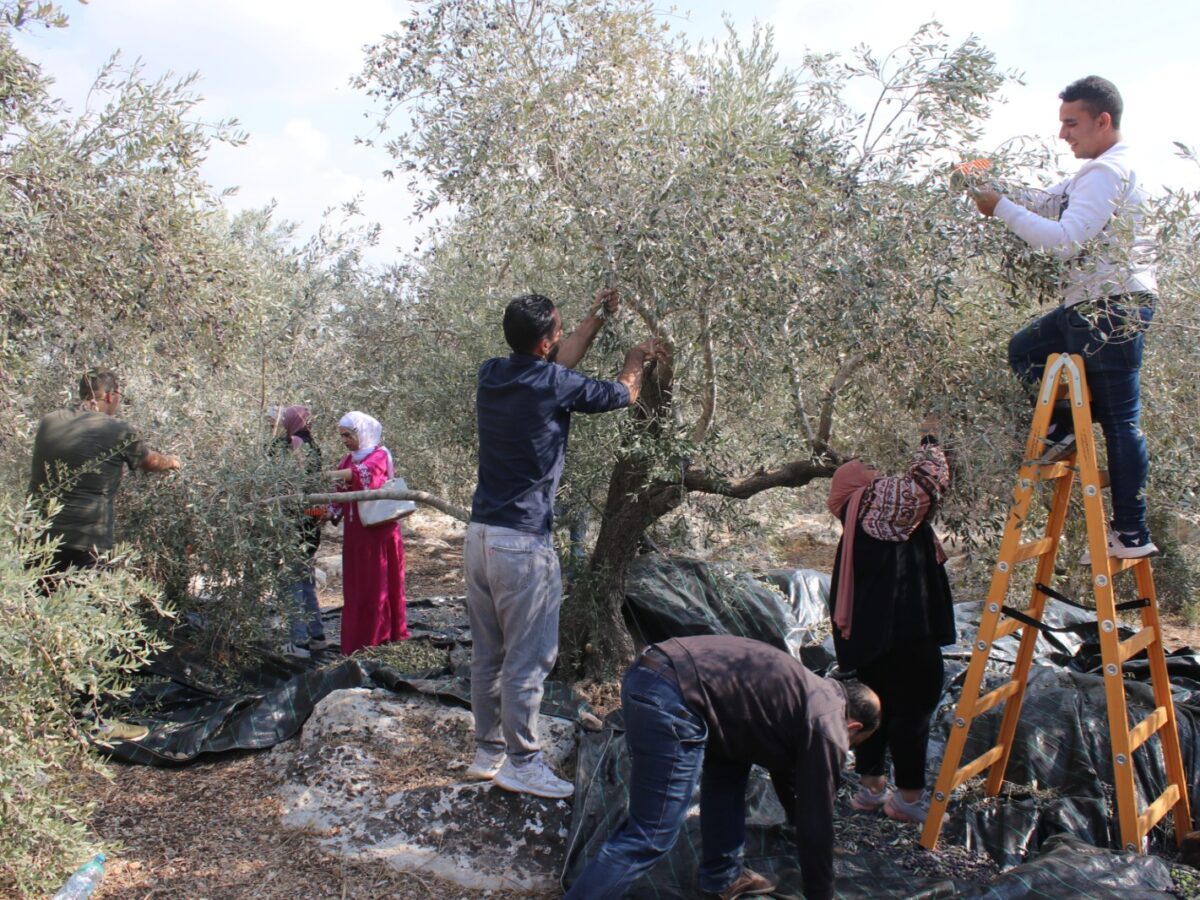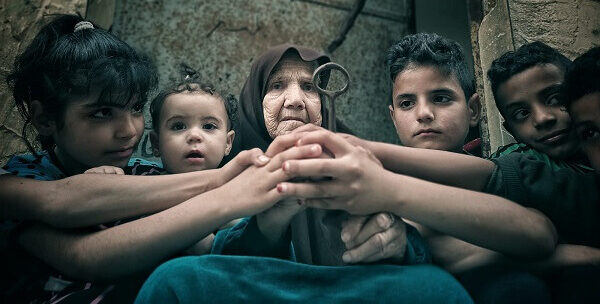
Stop the Wall live blog -We Will Return
Israel’s settler colonial project in Palestine is premised on the necessity to ethnically cleanse the land from its Indigenous population. Hence, the Nakba in 1948 started Israel’s ongoing, planned, and systematic policy of ethnic cleansing.
Now that Israel through its genocide in occupied and besieged Gaza wants to leave Palestinians only two choices – expulsion or death – Israel intensifies its ethnic cleansing also in the occupied West Bank.
This live blog keeps you up to date on Israel’s daily efforts to expel the Palestinian people from the West Bank and our daily struggle to resist on our land.
Take Action
Keep informed and share your knowledge and the news here.
Join the BDS movement to help cutting ties of complicity and hold Israel and its allies accountable.
Fight the efforts of the US-Israeli axis of genocide to eliminate the Palestinian refugees by opposing any efforts to dismantle the UN Refugee Works Agency (UNWRA) and to sideline the right of return of all of our refugees to their homes, as enshrined in UN Resolution 194.
Learn more about Israel’s ethnic cleansing
January 24 – Israeli apartheid forces continue demolitions in the Jenin refugee camp, destroying homes, stores, and infrastructure during the “Iron Wall” operation. Families were forcibly displaced as buildings were razed, sparking accusations of ethnic cleansing.
January 16 – Israeli apartheid forces demolished an agricultural room and closed a landfill in the eastern area of Shuqba, west of Ramallah. Military vehicles, accompanied by a bulldozer, carried out the operation, causing disruption in the area.
January 15 – Israeli apartheid forces began demolition operations in the Al-Mansoura area, south of Jenin, targeting structures and land in the region.
January 13 – Israeli apartheid forces carried out extensive demolition operations in the town of Hizma, northeast of occupied Jerusalem.
January 13 – Israeli apartheid forces carried out extensive demolition operations in the town of Hizma, northeast of occupied Jerusalem.
January 8 – Israeli military bulldozers demolished two homes in Kafr ad-Dik, west of Salfit, belonging to brothers Tariq and Mu’taz Naji. The homes, one two-story and one single-story, were occupied and destroyed under the pretext of being in a “Zone C” area.
January 8 – Demolitions were initiated in Khirbet al-Tawil, south of Nablus, by Israeli apartheid forces. Homes, agricultural structures, barns, and an electricity network supplying the area were targeted by five bulldozers, with no prior notice given.
January 8 – Demolitions were initiated in Khirbet al-Tawil, south of Nablus, by Israeli apartheid forces. Homes, agricultural structures, barns, and an electricity network supplying the area were targeted by five bulldozers, with no prior notice given.
January 8- Israeli apartheid forces demolished a sheep shelter and a maintenance shed in the village of Mikhmas, north of occupied Jerusalem.
January 7 – Israeli apartheid bulldozers demolished a home in Jabal al-Mukabber, southeast of occupied Jerusalem, and razed the access road. Recent data reveals 52 demolition operations in November, targeting 63 Palestinian structures, including 27 homes, with most demolitions concentrated in Jerusalem, Hebron, and Nablus.
January 5 – Six Palestinian families in Silwan, Jerusalem, were forced by Israeli apartheid forces to demolish their homes under the pretext of lacking permits, resulting in the displacement of 43 people, mostly children.
January 1 – -The home of Jerusalemite Nasreen Abu Rizk in Al-Walaja, south of occupied Jerusalem, was demolished by Israeli apartheid forces without prior warning. A Palestinian family of five was displaced as a result.
December 31 – A structure under construction in Shuafat refugee camp, located in occupied East Jerusalem, was demolished by Israeli apartheid forces. Bulldozers from the municipal authorities were used to raze the ground floor of the building, and streets within the camp were also leveled during the operation.
December 25 – Israeli apartheid forces demolished the Nahalin Tourist Resort, west of Bethlehem.
December 24 – Israeli apartheid forces demolished two houses, a restaurant, and agricultural facilities in the occupied city of Jerusalem.
December 23 – In the village of Shioukh Al-Arroub, north of Hebron, Israeli apartheid forces demolished a house belonging to Palestinian Mohammed Halayqa, which housed seven family members. The home is only one of several structures targeted for demolition after the Israeli occupation decided they wouldn’t allow any construction in the area.
December 21 – Israeli apartheid forced two Palestinians in Jerusalem , Mahmoud Aquil and Khader Shuqair, to self-demolish their homes. Mahmoud Aqil lived in the 60-square-meter house in Silwan together with his wife and two children.
December 17 – Israeli apartheid forces demolished two houses in Al-Nuway’ima, Jericho, belonging to Palestinian Hussam Dariat. Over 70 demolition orders have been issued in the area.
December 17 – Israeli bulldozers demolished four poultry barns, a carpentry workshop, and a water reservoir in Deir Ballut, west of Salfit. During the demolition, the Israeli military killed approximately 12,000 chickens, destroying the livelihood of around 35 Palestinian families in the town.
December 16 – The occupation forces demolished 41 structures and commercial shops in Al-Ramadin, in Al-Dhahiriya, south of the occupied city of Hebron.
December 16 – Israeli apartheid forces demolished six homes in the town of Anata, northeast of occupied Jerusalem. Since October 7 2023, the Israeli forces have already demolished 70 homes and facilities in the village.
In Al Bustan, Silwan, another home has been demolished.
December 10 – Israeli apartheid forces demolished homes and infrastructure in al-Tawil, Nablus, as 50 families in Kafr Qalil face displacement after demolition orders. This follows Israel’s plan to seize 24,000 dunams for settlement expansion.
December 9 – Israeli apartheid forces demolished two three-story homes in Al-Walaja village, northwest of Bethlehem, citing “lack of permits.” Dozens of homes in the area face similar demolition threats.
December 3 – Israeli apartheid forces demolished homes and agricultural structures in Nahalin, west of Bethlehem.
December 3 – Israeli apartheid forces force Palestinian Wasim Abu Rayala to demolish his own home in Issawiya, occupied Jerusalem.
December 2 – Israeli apartheid forces compelled Palestinian Hala Al-Obeidi to forcibly demolish her own home in Beit Hanina, occupied Jerusalem.
November 25 – Israeli apartheid forces carried out demolition operations in the town of Burqa, east of Ramallah.
November 20 – Israeli apartheid forces forced Alaa Matar to self-demolish his Jabal Al-Mukaber home, displacing 14. In Shuafat, residential structures were also destroyed, while the Shayah Mosque was demolished earlier.
November 19 – Israeli bulldozers demolished the Shiyah Mosque in Jabal al-Mukaber after imposing a curfew in the area. The mosque, built 20 years ago, was issued a demolition order two weeks prior.
November 19 – Israeli forces demolished the remains of the Umm al-Jamal Bedouin community after successfully displacing its residents. The last family was evicted two months ago, following the forced displacement of 13 families three months prior. Umm al-Jamal is one of several communities entirely uprooted in the past year.
November 18 – Israeli apartheid forces demolished two football fields and a photography studio in the village of Rafat, northwest of occupied Jerusalem.
November 16 – Israeli apartheid forces compelled the Salem family to demolish a 20-year-old room in Sheikh Jarrah, occupied Jerusalem.
November 14 – Israeli forces demolished a mosque in the village of Umm al-Hiran, located in the Naqab region, to pave the way for a new settlement named “Dror.” The demolition follows the forced displacement of Palestinian families from the area.
November 14 – Israeli apartheid forces demolished a two-story home belonging to Bara’a Nasser Ismail in Yitma, south of Nablus. The house, sheltering seven family members, was forcibly evacuated before demolition.
November 13 – Israeli apartheid forces demolished a house and several structures in Beit Ummar, north of Hebron, under the pretext of proximity to military sites.
November 11 – Settler militias from the “Tapuah” settlement, built on Palestinian land, stole olives from lands owned by local villagers.
November 10 – Israeli forces prevented residents in Tel Rumeida, Hebron, from harvesting olives, seizing the crop, and forcing the Qneibi family off their land.
November 10 – The Jerusalem municipality forced Palestinian Mohammed Al-Aour to demolish his home in Jabal al-Mukaber, Jerusalem. Settler militias cut down 40 trees near Bethlehem in the occupied West Bank.
November 9 – The guard of the “Yitzhar” settlement, accompanied by settlers dressed in Israeli military uniforms, expelled farmers and stole olives from them in the lands of Burin village, south of Nablus.
November 8 – Settler militias attacked olive harvesters in the “Shaab Sidar” area, east of Deir Jarir village near Ramallah.
November 6 – Israeli apartheid forces demolished two homes in Masafer Yatta, south of Hebron: one in At-Tuwani belonging to Fadi Al-Amour, demolished for the second time this year, and another belonging to Yaqub Al-Masri in Jorat Al-Jamal. Activists warn of further demolitions targeting homes under demolition orders.
November 5 – Israeli Settler militias attacked olive pickers west of Yatta, kidnapping a young man and his mother.
November 5 – Israeli apartheid forces demolished eight Palestinian homes in Silwan, occupied Jerusalem, under strict military closure, blocking residents and journalists. Affected homes included those of the Al-Ruwaidi family, activist Fakhri Abu Diab, and others. The Wadi Hilweh Center reported extensive demolitions, road leveling, and tree uprooting across the area.
November 5 – Israeli apartheid authorities demolished three buildings with seven apartments in Al-Bustan, Silwan, displacing 32 Palestinian residents from the Ayed, Al-Ruwaidi, and Abu Diab families. The demolitions, which continued all day, included leveling walls, and streets, and uprooting trees. Fakhri Abu Diab, one of the homeowners, reported that 109 more homes in Al-Bustan remain at risk as part of an Israeli plan to displace Palestinians and expand settlements in Jerusalem.
November 4 – Settler militias set fire to olive trees over a hundred years old in the village of Burqa, east of Ramallah.
November 4 – An Israeli settler brandished his weapon, threatening Palestinians attempting to harvest olives from their own land in the village of Husan, west of Bethlehem.
November 3 – Israeli apartheid authorities forced Palestinian Dirar Darwish to self-demolish a residential room and agricultural structure in Issawiya, Jerusalem, due to lack of a building permit. The occupation routinely denies permits to Palestinians, forcing them to demolish their own homes or face heavy fines if the authorities do it.
November 2 – Armed settler militias, accompanied by dogs, attacked olive pickers in Kafr ad-Dik, west of Salfit, attempting to expel them with threats and harassment. Farmer Yousef ad-Dik reported that settlers recently stole 30 sacks of olives, and agricultural equipment, and allowed livestock to graze among olive trees to prevent locals from accessing their land.
November 2 – Israeli apartheid forces prevented farmers from harvesting olives in the village of Qaryut, south of Nablus.
October 22 – Settler militias of “Taffouh” settlement, built on land in the village of Yasuf, east of Salfit, cut down 30 olive trees, aged 20-25 years, owned by Imad Rabah Abdel Razek and Jihad Imad Abdel Razek.
October 20 – Attacks by settler militias are again intensifying during the olive harvest season. Large groups of settlers carried out a progrom against the residents of Jalud, a village near Nablus. They set fire to homes, vandalized vehicles, killed livestock, and physically assaulted villagers. 2 Palestinians were injured in the face and another suffered a skull fracture during the attack.
October 18 – Israeli settlers attacked Palestinian farmers in the Nablus Governorate in the occupied West Bank on Friday.
October 18 – Settler militias assaulted farmers harvesting olives in the village of Susya, located in Masafer Yatta south of Hebron. Israeli apartheid forces injured a foreign activist while protecting the Settlers.
October 14 – Under the protection of Israeli forces, settler militias attacked Palestinian farmers harvesting olives in their fields in Qusra, south of Nablus. The militias also targeted Palestinian homes, while Israeli forces fired live bullets at the residents.
October 13 – Settler militias attacked the village of Qusra, south of Nablus, and cut down more than 40 olive trees belonging to Palestinian farmer Shaher Hassan.
October 12 – Several settlers vandalized seven olive trees, over 20 years old, in the Wadi area north of Yasuf village, east of Salfit.
October 5 – Dozens of settlers from nearby outposts and settlements attacked Palestinian farmers harvesting olives in Al-Lubban Al-Gharbi, Ramallah, injuring six Palestinians. Israeli forces shielded the settlers and fired tear gas at the farmers, forcing them off their lands.
October 4 – Settler militias assaulted farmers and olive pickers in Sebastia, northwest of Nablus, driving them off their lands.
October 1 – Israeli apartheid forces carried out three demolitions of Palestinian property: a house in Jericho, a commercial facility in Wadi al-Joz in Jerusalem for the implementation of the “Silicon Valley” project, and three greenhouses in Jalameh, north of Jenin.
October 1 – Israeli Military bulldozers under the protection of Israeli apartheid forces and the “Civil Administration” crews, began leveling lands and olive trees in the northern area of the town of Sinjil. The occupation authorities intend to erect a 1,500-meter-long separation fence extending from the northern entrance to Sinjil along bypass road No. 60 adjacent to the town’s lands.
Sep 30 – Israeli apartheid forces demolished 7 commercial facilities in the Shuafat Palestinian refugee camp, north of occupied Jerusalem.
September 25 – Settler militias from the settlement of Tapuach set fire to agricultural land near the homes in the Palestinian village of Yasuf. Yasuf is located east of the city of Salfit, within the line of the settlement corridor that is to cut off the northern West Bank from the center.
September 24 – Stop the Wall releases a full report of Israeli attacks during August in Masafer Yatta,
September 23 – The occupation forces carried out demolitions for the 250th time in the village of Al-Araqib in the occupied Negev.
September 22 – Settler militias from the “Efrat” settlement and the “Qafa’at Eitayam” outpost cut down dozens of fruitful olive trees in the areas of “Khalayel Al-Loz” and “Khallet Al-Nahla”, belonging to the Abu Kamil and Al-Suwais families.
September 19 – Israeli occupation bulldozers demolished a house, a barracks, and two agricultural rooms, in addition to destroying the floor of a house under construction in the town of Awwa, southwest of Hebron, under the pretext of building without a permit. Al-Suwaiti warned that if the demolitions continue, the area will be emptied of its residents, and noted that since October 7, seven homes and institutions in the town, including three in area “B,” have been demolished.
September 18 – Israeli apartheid forces carried out extensive demolition and bulldozing operations in the Wadi al-Hummus neighborhood in the town of Sur Baher, south of occupied Jerusalem.
September 12 – The Israeli apartheid forces demolished 3 houses and commercial facilities in southern areas of the West Bank. A house under construction was demolished in the “Farsh al-Hawa” area. The occupation forces also demolished a two-story house in the village of al-Walaja, northwest of Bethlehem, in the southern West Bank.
September 11 – For the 13th consecutive day, settler militias, under the protection of the Israeli separation forces, continue to bulldoze about 500 dunams of land in the villages of Umm Safa and Aroura, northwest of Ramallah. Marwan Sabah, head of the Umm Safa village council, reported that the operations led to the road leading to Deir al-Sudan being cut off, which led to the detention of the village’s 720 residents. Settler militias opened fire on residents who protested the bulldozing operations targeting Jabal al-Ras.
September 10 – Israeli separation forces demolished a house, a water well, and retaining walls, in addition to destroying water tanks for a Palestinian family of 10 people, in the Khalidiya area of the town of Carmel, east of Yatta, south of Hebron.
September 9– Israeli apartheid forces demolished a two-floor Palestinian house inhabited by 6 people in the town of Hizma, northeast of occupied Jerusalem.
September 3 – Israeli apartheid forces demolished homes in the town of Az-Zawiya, west of Salfit, under the pretext of building without a permit.
September 2 – Israeli apartheid forces demolished a house in the village of Ad-Duyuk al-Tahta, west of the city of Jericho.
August 19 – Israeli apartheid forces demolished a Palestinian house under construction in the Al-Ram town. @volvogroup bulldozers enabled this war crime.
August 1-31 The escalating violence by Israeli settlers and apartheid forces in the West Bank, especially in Masafer Yatta, aims to displace Palestinians and seize their land. Backed by the Israeli government and military, these attacks have intensified in recent months, threatening the survival of Palestinian communities. This violence is part of the ongoing Nakba and Israel’s settler colonial agenda. STW team has documented All attacks in Masafer Yatta, and we have compiled a comprehensive report on them. See all attacks in Masafer Yatta in August.
June 28 – Israeli apartheid forces demolished 17 Palestinian housing and health units in Masafer Yatta, south of Hebron, displacing 38 Palestinians from their homes as part of the ongoing ethnic cleansing in the West Bank.
June 25 – Israeli apartheid forces demolished a Palestinian house in Marah Mualla, south of Bethlehem. The number of facilities demolished by Israeli apartheid forces in the occupied West Bank during the year 2024 is 565, resulting in the displacement of more than 1,000 Palestinians.
June 6 – Israeli apartheid forces demolished 7 Palestinian homes in Wadi al-Rahwa, Hebron District. More than 230 Palestinian facilities have been demolished in the West Bank since the beginning of 2024.
June 4 – Israeli Apartheid forces demolished a 200-square-meter house belonging to the Al-Nawajaa family in Masafer Yatta, specifically in the Wadi Al-Jawaya area. The house accommodated nine family members, who were subjected to physical assault during the demolition.
May 23 – Israeli settler militias, under the protection of Israeli apartheid forces, attacked the people of the village of Asira al-Qibliya, southwest of Nablus, and set fire to agricultural lands in the village.
May 20 – Israeli settler militias attacked the village of Yatma, south of Nablus, and burned cars and olive trees. They also tried to burn Palestinian homes but people collectively defended their village.
May 19 – Settler militias Burned large areas of olive trees in the village of Turmus Ayya.
May 16 – Israeli settler militias attacked the village of Barqa again, burning cars and houses, and attacking the villagers. Palestinian villages are daily facing attacks by settlers in their effort to make life impossible and expel them from their homes and land.
May 12 – Israeli apartheid forces demolished Palestinian homes in Nuweimah village in Jericho.
May 12 – Israeli settler militias burned a house in the village of Duma last night. The attacks on Palestinians continue to escalate in the West Bank, especially in Area C, without any protection for the villagers.
May 8 – Israeli apartheid forces demolished houses and assaulted the Palestinian residents for defending their homes in the Naqab region.
May 7 – Israeli apartheid forces demolished the home of a Palestinian family in the village of Jawaya in Masafer Yatta, south of Hebron.
Links
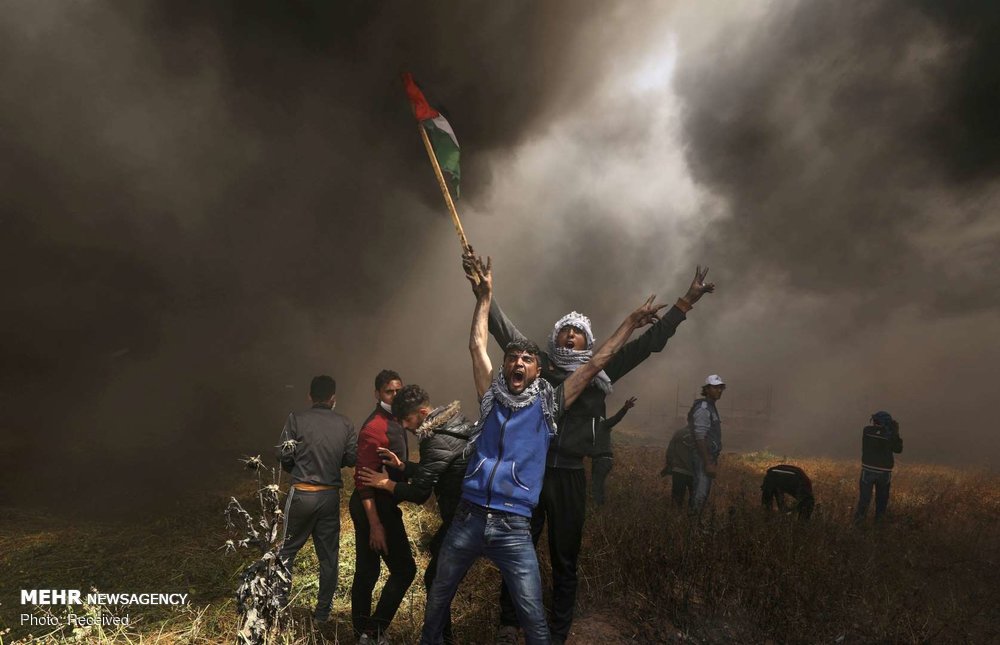
The Right to Exist
The Right to Exist Campaign is our response to Israel’s relentless attempts to obliterate Palestinian presence as a people, a culture, and a lifestyle.

Quick facts about the Palestinian refugees and their right of return

The UN and the Palestinian Right of Return: “The exercise of the individual right of the Palestinian to return to his homeland was a conditio sine qua non for the exercise by this people of its rights to self-determination, national independence, and sovereignty.”

Learn more about Palestinian refugees and the UN Refugees Works Agency (UNRWA)
Show more
Israel’s ethnic cleansing
Israel’s very foundation is built on the mass expulsion of over half of the Palestinian people and the destruction of over 500 Palestinian cities, villages and communities during 1948/9. The mass expulsion of Bedouin communities continued until the early 1950s. And this Nakba (Arabic: catastrophe) continues until today.
The mass expulsion of approximately 750,000 Palestinians (about ⅔ of all Palestinians living on the 78% of Palestine on which Israel was established in 1948) was a deliberate and systematic act of ethnic cleansing. Today, there are an estimated 9.17 million displaced Palestinians worldwide (as of 2021). They include approximately 8.36 million refugees and 812,000 internally displaced persons.
Settler colonialism is by definition a long term project of conquest of territory that substitutes the Indigenous population with a settler population. For this effort to be enduring over time, it is fundamental for the colonizer to eliminate the Indigenous population or at least their resistance – or, as Israeli politicians and ideologues repeat, to destroy their hope to achieve justice. The ongoing effort to expel Palestinians in order to settle a Jewish population in their place is a core pillar of Israel’s policy, justified or even mandated by Zionism, the European settler-colonial ideology on which Israel has been founded.
The imposition of a regime of apartheid serves as a temporary attempt to create a sustainable colonial regime as long as physical expulsion or genocidal elimination is impossible. It eliminates the Indigenous people from certain spaces, excludes them from the field of (full) citizens, and justifies continued repression of any claims and struggle of the oppressed.
Israel currently perpetrates all three strategies of genocide, apartheid and ethnic cleansing concurrently.
Ethnic cleansing in the West Bank today
Palestinian communities in the occupied West Bank are attacked by Israeli military and settler militias, non recognized, deprived of access to vital infrastructure, and demolished.
1967-1993
The strategic focus of Israel’s ethnic cleansing have been focused since the beginning of the occupation in 1967 on strategic areas, especially the Jordan Valley and Jerusalem and its surroundings. This is evident from the maps for annexation produced by Israel, including the Allon Plan (1967), the Sharon Plan (1977), and the Drobles Plan (1978).
1993-2002
After the signing of the Oslo Accords between Israel and the Palestine Liberation Organization in 1993, the areas Israel aims to annex and ethnically cleanse have become designated as Area ‘C’, constituting 61% of the West Bank.
2002 -2020
With the construction of Israel’s apartheid Wall, the colonial regime defined its focus of displacement, putting all those communities outside the Wall in the frontlines of its onslaught of displacement.
2020 – 2023
In 2020, Israel presented its map of ethnic cleansing as part of Donald Trump’s “Deal of the Century”. It implies the de jure annexation of 33% of the West Bank. Over 75 Palestinian villages, Bedouin and semi-Bedouin communities are to be ethnically cleansed, with a total population of 118000.
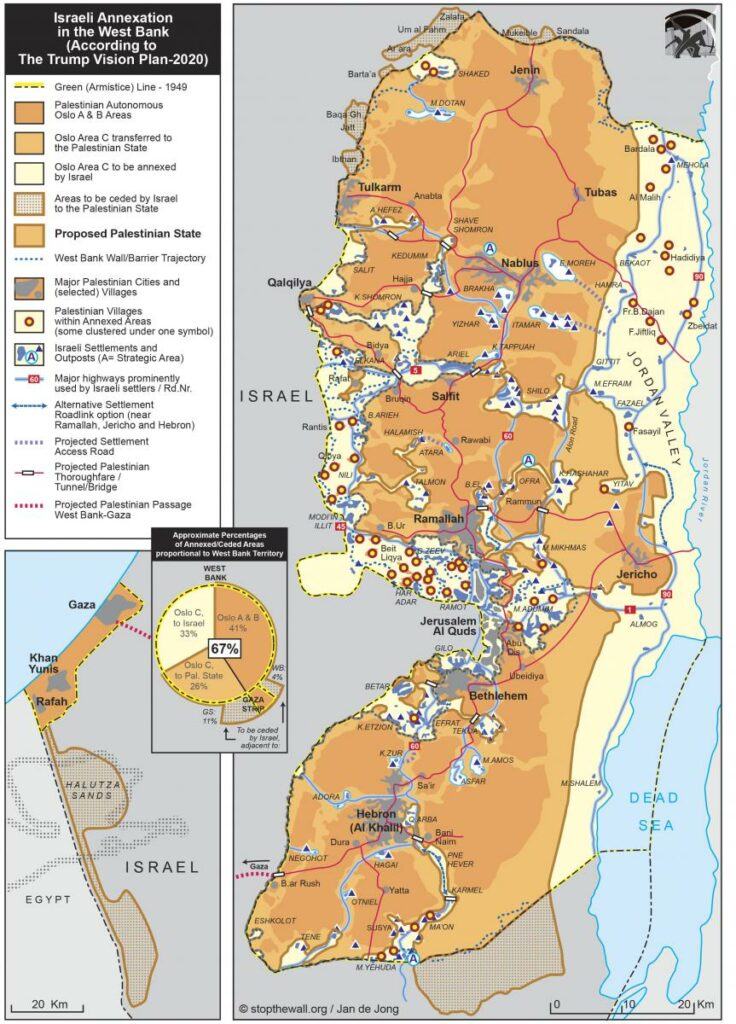
2023 – today
Since the start of Israel’s genocide against the 2.3 million Palestinians in Gaza (the overwhelming majority of them refugees), Israel has escalated its ethnic cleansing in the occupied West Bank in many ways. Demolitions of homes, water wells, and other vital infrastructure as well as progroms and physical aggressions against communities and their lands by settler militias and the military have increased, and the isolation and fragmentation of communities have intensified. 17 communities have been forced to leave their homes in less than a year.
In addition, Israel is systematically targeting the Palestinian refugee camps in the West Bank with raids and destruction. They are the living testimony of the ongoing Nakba and a daily reminder to Israel’s regime that Palestinians will continue to exist, to resist and to claim their inalienable right of return.
July 19, 2024 – International Court of Justice Advisory Opinion
In its Advisory Opinion on the “Legal Consequences arising from the Policies and Practices of Israel in the Occupied Palestinian Territory, including East Jerusalem”, the International Court of Justice confirmed that:
“the large-scale confiscation of land and the deprivation of access to natural resources divest the local population of their basic means of subsistence, thus inducing their departure. Furthermore, a series of measures taken by Israeli military forces has exacerbated the pressure on the Palestinian population to leave parts of the Occupied Palestinian Territory against their will.
“The Court recalls that, under the first paragraph of Article 49 of the Fourth Geneva Convention, “[i]ndividual or mass forcible transfers, as well as deportations of protected persons from occupied territory to the territory of the Occupying Power or to that of any other country, occupied or not, are prohibited, regardless of their motive”.
“In this regard, the Court considers that transfer may be “forcible” — and thus prohibited under the first paragraph of Article 49 — not only when it is achieved through the use of physical force, but also when the people concerned have no choice but to leave.
“Further, the Court notes that, to be permissible, evacuations are conceived as a temporary measure, to be reversed as soon as the imperative military reasons subside. By contrast, evacuations of a permanent or indefinite character breach the prohibition of forcible transfer. “The Court considers that Israel’s policies and practices, including its forcible evictions, extensive house demolitions and restrictions on residence and movement, often leave little choice to members of the Palestinian population living in Area C but to leave their area of residence. The nature of Israel’s acts, including the fact that Israel frequently confiscates land following the demolition of Palestinian property for reallocation to Israeli settlements, indicates that its measures are not temporary in character and therefore cannot be considered as permissible evacuations under the Fourth Geneva Convention. In the Court’s view, Israel’s policies and practices are contrary to the prohibition of forcible transfer of the protected population under the first paragraph of Article 49, of the Fourth Geneva Convention.”
- “Israel is also under an obligation to provide full reparation for the damage caused by its internationally wrongful acts to all natural or legal persons concerned. Reparation includes restitution, compensation and/or satisfaction.
“Restitution includes Israel’s obligation to return the land and other immovable property, as well as all assets seized from any natural or legal person since its occupation started in 1967, and all cultural property and assets taken from Palestinians and Palestinian institutions, including archives and documents. It also requires the evacuation of all settlers from existing settlements and the dismantling of the parts of the wall constructed by Israel that are situated in the Occupied Palestinian Territory, as well as allowing all Palestinians displaced during the occupation to return to their original place of residence.”
DONATE NOW
Join the Stop the Wall Campaign to tear down Israel’s apartheid Wall!
Our joint struggle is becoming the weak spot for the Israeli occupation.
YOU CAN MAKE A DIFFERENCE!
We are strong with you standing with our struggle!

